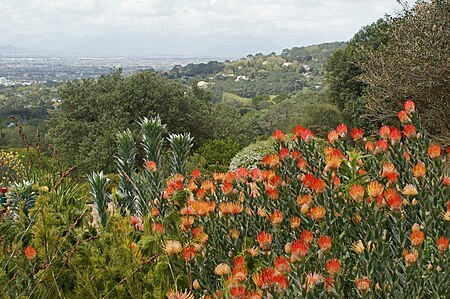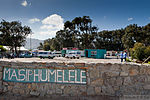Cape Floristic Region

The Cape Floral Region is a floristic region located near the southern tip of South Africa. It is the only floristic region of the Cape Floristic Kingdom, and includes only one floristic province, known as the Cape Floristic Province. The Cape Floristic Region, the smallest of the six recognised floral kingdoms of the world, is an area of extraordinarily high diversity and endemism, and is home to over 9,000 vascular plant species, of which 69 percent are endemic. Much of this diversity is associated with the fynbos biome, a Mediterranean-type, fire-prone shrubland. The economical worth of fynbos biodiversity, based on harvests of fynbos products (e.g. wildflowers) and eco-tourism, is estimated to be in the region of R77 million (~US$5 million) a year. Thus, it is clear that the Cape Floristic Region has both economic and intrinsic biological value as a biodiversity hotspot.
Excerpt from the Wikipedia article Cape Floristic Region (License: CC BY-SA 3.0, Authors, Images).Cape Floristic Region
Geographical coordinates (GPS) Address Nearby Places Show on map
Geographical coordinates (GPS)
| Latitude | Longitude |
|---|---|
| N -34.166666666667 ° | E 18.375 ° |
Address
Cape Town Ward 61
7995 , Cape Town Ward 61
Western Cape, South Africa
Open on Google Maps


